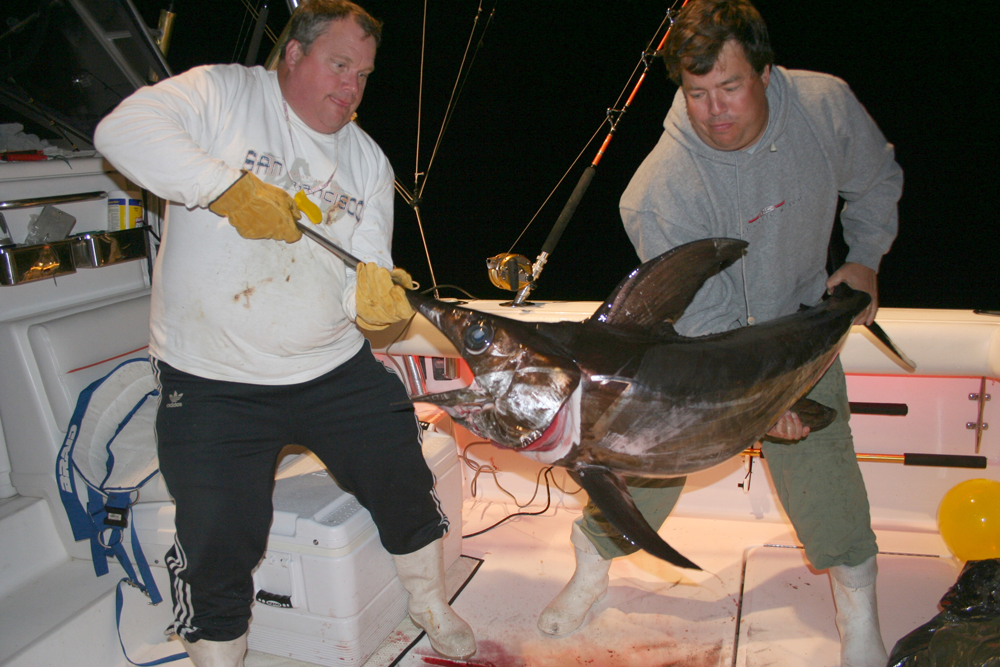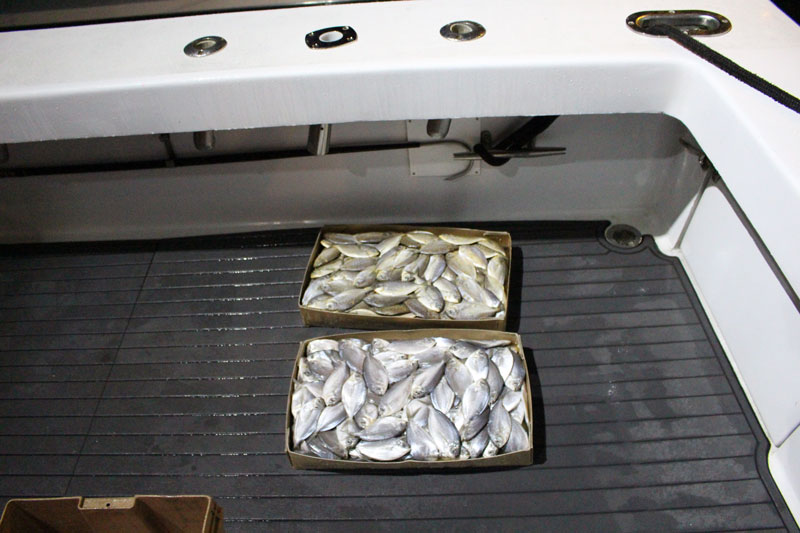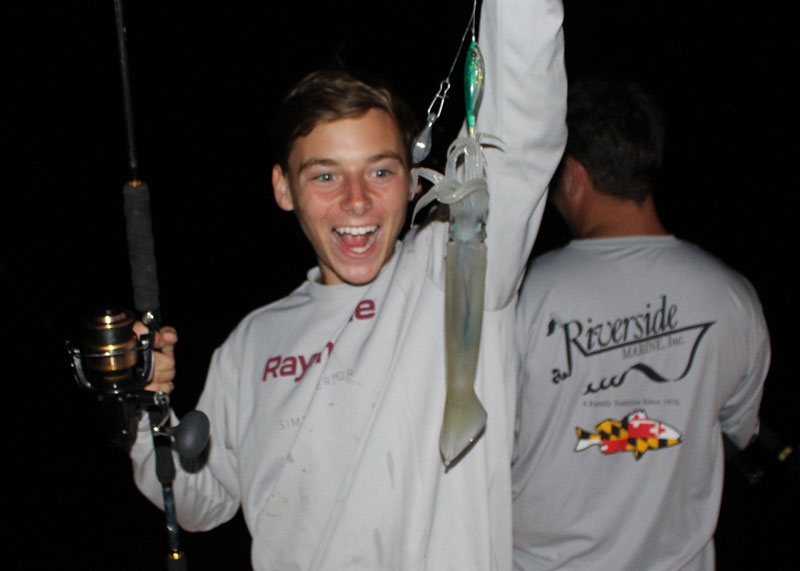Early fall is a great time to target swordfish at the Mid-Atlantic canyons. The fish are in feeding mode, but the weather is still fairly predictable and overnighters are possible for those who haven't mastered daytime swordfish deep dropping. If you want to take aim at this species while overnighting in the deep, drifting rigged squid is usually the most successful way to hit the bulls-eye.

As you plan your trip, remember:
- Rig up with extremely heavy leader. These fish aren’t leader-shy, and their bill can chaff through 100 pound test in a heart-beat — 250 or 300 pound test is not out of order.
- Use big circle hooks. We mean really big. A 14/0 to 18/0 hook is appropriate. Note that some swordfish sharpies still prefer J hooks and this is a debate with no end in sight; pick your poison.
- Always use rigging floss to secure the mantle of the squid to the tentacles. Swordfish often slash at the bait, and if it comes in two, there’s a good chance the fish will only find half of it. Naturally, that would be the half that doesn’t have your hook embedded in it.
- Keep a light in the water (green lights like the Hydroglow or Electrolume are by far the best) and watch for squid. When you see them, drop down a squid jig and gather some live baits. Not only will they excite the swordfish, but live squid will drive the tuna crazy, too.
- Although the swords are found in incredibly deep water (usually 1000 to 2000 feet) they still relate to structure. Try your drifts along canyon edges and temperature breaks. When the two meet you’ve found a prime location.
- Stagger your offerings by increments of 100 feet or so. Successful anglers will try a bait at 300 feet, another at 200, one at 100, and one at 40 to 50 feet at the edge of the light-line created by their boat’s light. You can add additional lines into this mix, but it’s tough to get more than four lines set and still run stripper-lines for tuna at the same time (which most anglers certainly will want to do) without creating tangles.
Remember that along with swordfish, night time can be the right time for tunas. Yellowfin and bigeye commonly strike at night, so even when focused on the swordfish most anglers will want to take some extra measures to get those rods bent.

Chunking butterfish will do the trick, though it will also create a lot of work. The critical thing here is to keep that chunk flow steady, so one crewmember must be dedicated to chunking at all times. And, remember that stripper line we mentioned earlier? This will usually be the one tuna choose to strike, so keep it running constantly. Start off with a chunk bait and if you can catch some squid to offer up live, so much the better.

Okay: ready to head out for the deep and fish in the dark? Don't forget to prepare safety-wise (that's a topic for a whole other article), rest up the day before, and cross your fingers, because this can be when some epic action ensues.
Editor's note: This article was originally published in September of 2017 and was last updated in August of 2024.